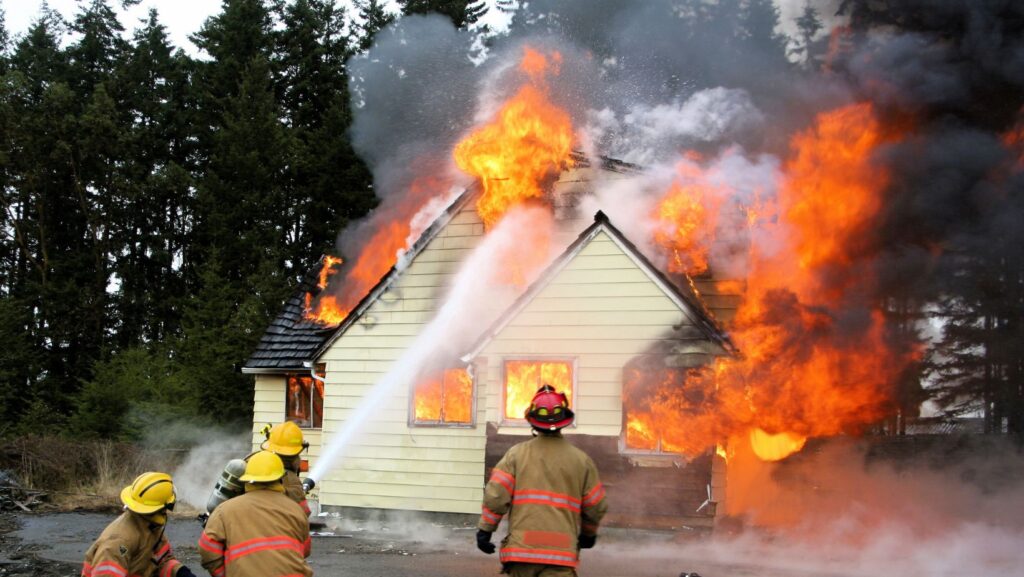
ConsumerShield reports that house fires increased to 374,000 in 2022, and now the devastating Eaton fire in Los Angeles destroyed more than 7,000 homes and businesses in just two days. Thousands of families now need urgent help after losing their homes. Such losses create emotional trauma that can take years to heal and affect everything from work to relationships.
Your feelings of shock and confusion are entirely natural right now. Support systems and resources are ready to help you through this difficult time. FEMA provides housing assistance to homeowners and renters, and the American Red Cross runs a 24/7 Disaster Distress Helpline for counseling. California insurance companies must give you four months of loss-of-use payments. The Small Business Administration also offers loans at rates as low as 2.563%.
This detailed guide will help you take the proper steps immediately – from finding emergency shelter to getting financial help and handling insurance claims. We have gathered all the key information to guide you through this tough time and help you rebuild your life.
Immediate Actions for Safety and Shelter
Quick action in the first 24 hours after a house fire can make all the difference in recovery and rebuilding.
Securing Emergency Accommodation
Finding a safe place to stay should be your top priority. The American Red Cross provides immediate emergency shelter, and FEMA helps with temporary housing through their Transitional Sheltering Assistance program. You should contact both organizations right away – they’ll help you find hotel accommodations or connect you with local shelters.
Contacting Essential Authorities
Once you have a safe place to stay, contact these important organizations in this order:
- Local fire department for a fire report
- Insurance company to initiate claims
- Utility companies to disconnect services
- Property manager or mortgage company
- Local police to secure the property
Documenting the Damage
You need detailed documentation before cleanup work begins. The Insurance Claim Recovery Support highlights these vital steps:
- Capture wide-angle shots of entire rooms
- Take close-up photos of specific damages
- Document from multiple angles
- Create detailed inventory lists
- Preserve any undamaged receipts
- Record all structural damage
Good documentation will strengthen your insurance claim and speed up the recovery process. Store these records in a safe place, preferably digitally with backup copies.
On top of that, many insurance policies cover emergency board-up services if your home needs protection from weather or unauthorized entry. You should not enter your property until the fire department says it’s safe – hidden structural damage could be dangerous.
Accessing Emergency Financial Assistance
You need financial help to recover after securing your safety and documenting the damage. House fires affected over 374,000 families in 2022, and many organizations can help you get back on your feet.
Government Assistance Programs
FEMA’s Individual Assistance Program should be your first stop. The program gives grants that cover essential home repairs and temporary housing needs. FEMA provides financial assistance for:
- Simple home repairs
- Temporary housing costs
- Medical expenses
- Personal property loss
- Transportation needs
Nonprofit Organization Support
The American Red Cross and Salvation Army lead immediate disaster relief efforts. Their programs help victims receive emergency cash assistance within hours. The Red Cross also provides financial support for food, water, baby supplies, and medical necessities.
Emergency Loans and Grants
Several loan options can help you rebuild. The Small Business Administration (SBA) gives disaster loans to homeowners and renters with interest rates as low as 2.5%.
These steps will help you get financial assistance:
- Register with FEMA through DisasterAssistance.gov
- File insurance claims first, as required by FEMA
- Gather documentation of losses
- Apply for SBA disaster loans if needed
- Contact local nonprofits for additional support
We will help you through each step of the application process.

The California Fire Foundation helps by distributing $250 Disaster Relief cash cards through their community organizations.
Navigating Insurance and Documentation
The process of dealing with insurance claims can feel overwhelming, especially when you’ve just gone through a house fire. With fire incidents reaching 374,000 in 2022, we know you need a clear guide to help you through this process.
Filing Insurance Claims
Here are the steps you need to take for a smooth claims process:
- Contact your insurance company immediately
- Request an advance for immediate expenses
- Document all communication with adjusters
- Keep all receipts for temporary repairs
- Never sign a release or waiver without legal review
Creating Property Inventory
A complete inventory will make your claim stronger. You can use technology to help you – photos, videos, and digital records will support your case.
Your inventory needs these details:
- Purchase dates and prices
- Model numbers and descriptions
- Photos or videos of damaged items
- Receipts and appraisals where available
- Serial numbers of electronics and appliances
Managing Important Documents
Your important documents need immediate attention. Keep these vital records in a waterproof container. We can help you get replacements for destroyed documents from the right government agencies.
Some damaged documents might still be salvageable. Don’t try to clean or restore them yourself. Document their condition carefully and let restoration specialists handle the preservation work.
Note that your insurance company must send you a “notice of intentions” within 30 days after they receive your claim. We’ll help you understand your rights and keep detailed records of all your conversations with insurance adjusters throughout this process.
Recovery Resources and Support Systems
House fire recovery goes beyond rebuilding walls and roofs – you need emotional and practical support to get back on your feet. Statistics show fire incidents reached 374,000 in 2022, and we’re ready to connect you with essential recovery resources.
Mental Health and Trauma Support
Disaster-related stress shows up differently for everyone. You can reach the Disaster Distress Helpline’s trained counselors anytime at 1-800-985-5990. They provide:
- Crisis counseling for emotional distress
- Help to spot stress symptoms
- Healthy coping strategies
- Links to local support services
- Support in over 100 languages
Community Assistance Programs
Our team works alongside local organizations to give you the support you need. The American Red Cross helps with shelter and connects you to vital resources. We coordinate with our network partners to get you temporary housing, food, and medical supplies quickly.
Legal Aid Services
Legal issues often pop up during recovery. Here’s how you can get free legal help:
- Contact FEMA’s Disaster Legal Services program
- Connect with local pro-bono attorneys
- Ask for help with insurance claims documentation
- Get assistance with home repair contracts
- Get support for FEMA appeals
These services help you handle insurance claims, create new legal documents, and solve landlord-tenant issues. Our partnerships with the American Bar Association ensure you get confidential, free legal advice right when you need it most.
Conclusion
A house fire survival marks the start of a difficult path to recovery. You’re not alone – ConsumerShield reported 374,000 fires in 2022. Many families have rebuilt their lives successfully after similar experiences.
Your key priorities should focus on:
- Getting safe shelter through FEMA or Red Cross
- Creating complete damage documentation
- Reaching out to necessary authorities
- Finding available financial help
Physical rebuilding is just one part of recovery. Mental health support plays a crucial role, and the Disaster Distress Helpline’s trained counselors are available 24/7. They can help you handle trauma and build effective coping strategies.
Recovery needs time and patience. The road ahead might feel daunting, but support systems are ready to guide you through each phase. FEMA, the American Red Cross, and local community groups provide complete assistance packages that range from immediate shelter to long-term recovery support.
Take that first step toward recovery today. Professional guidance can light your path during this challenging time, and better days are coming.




